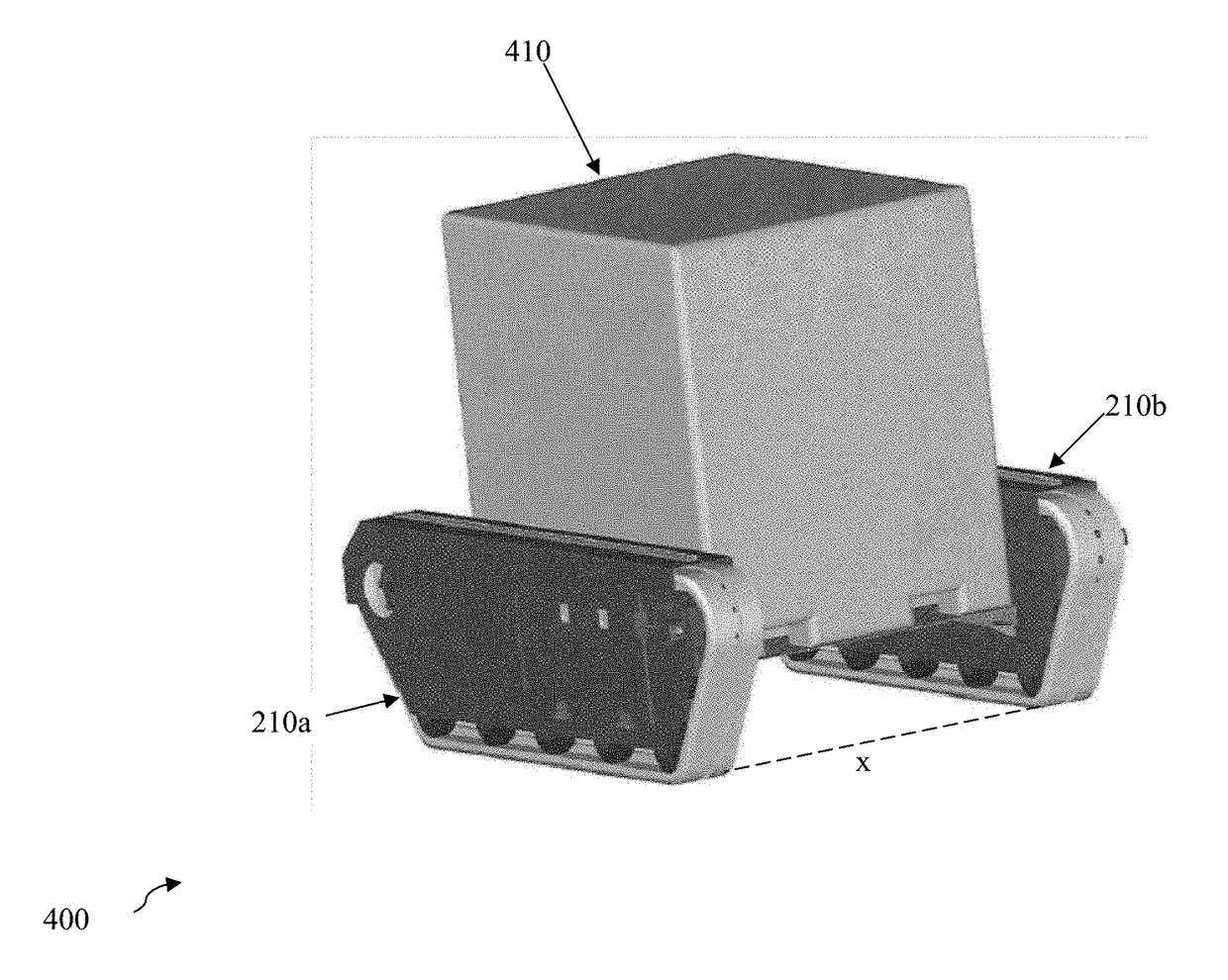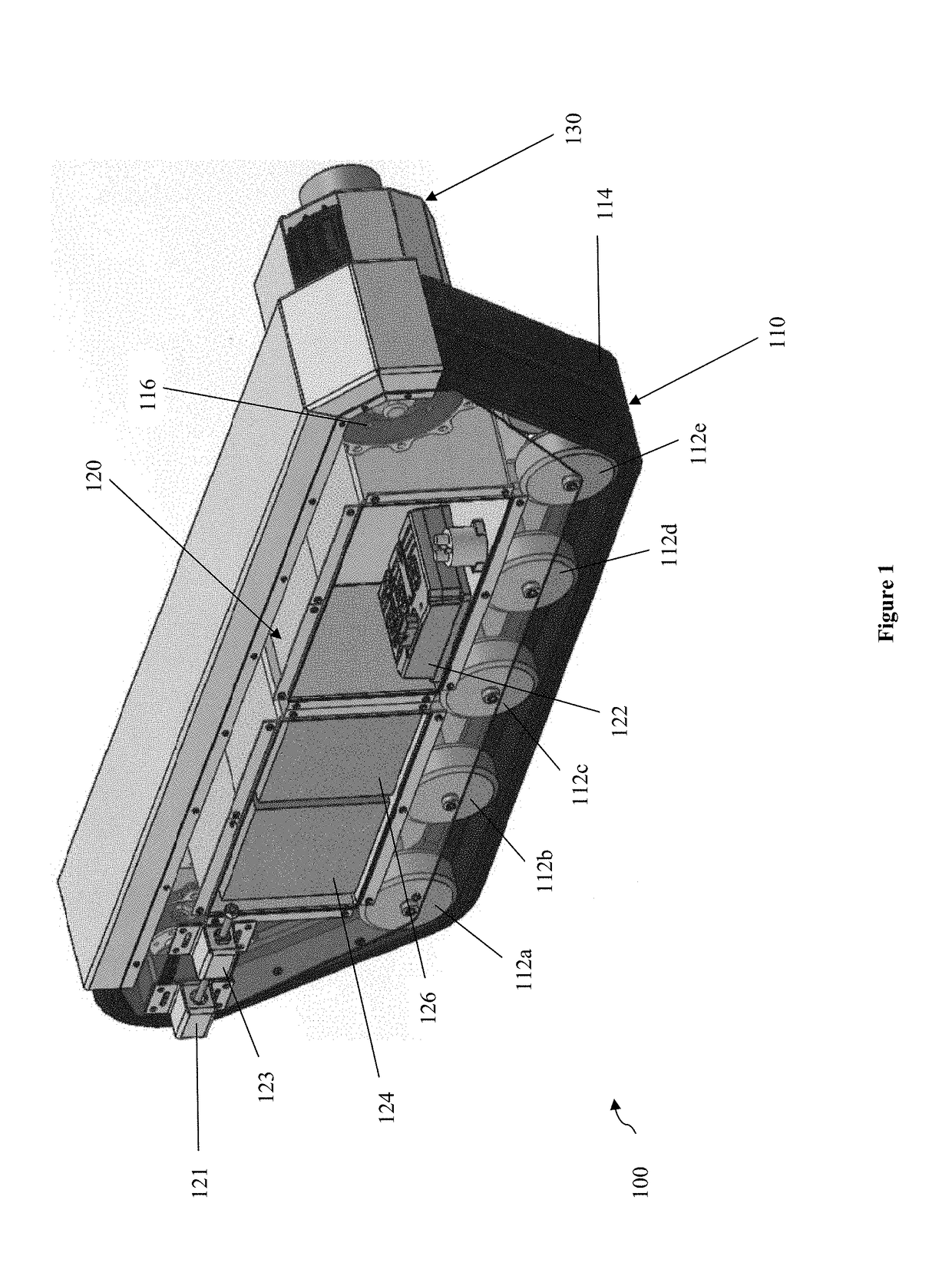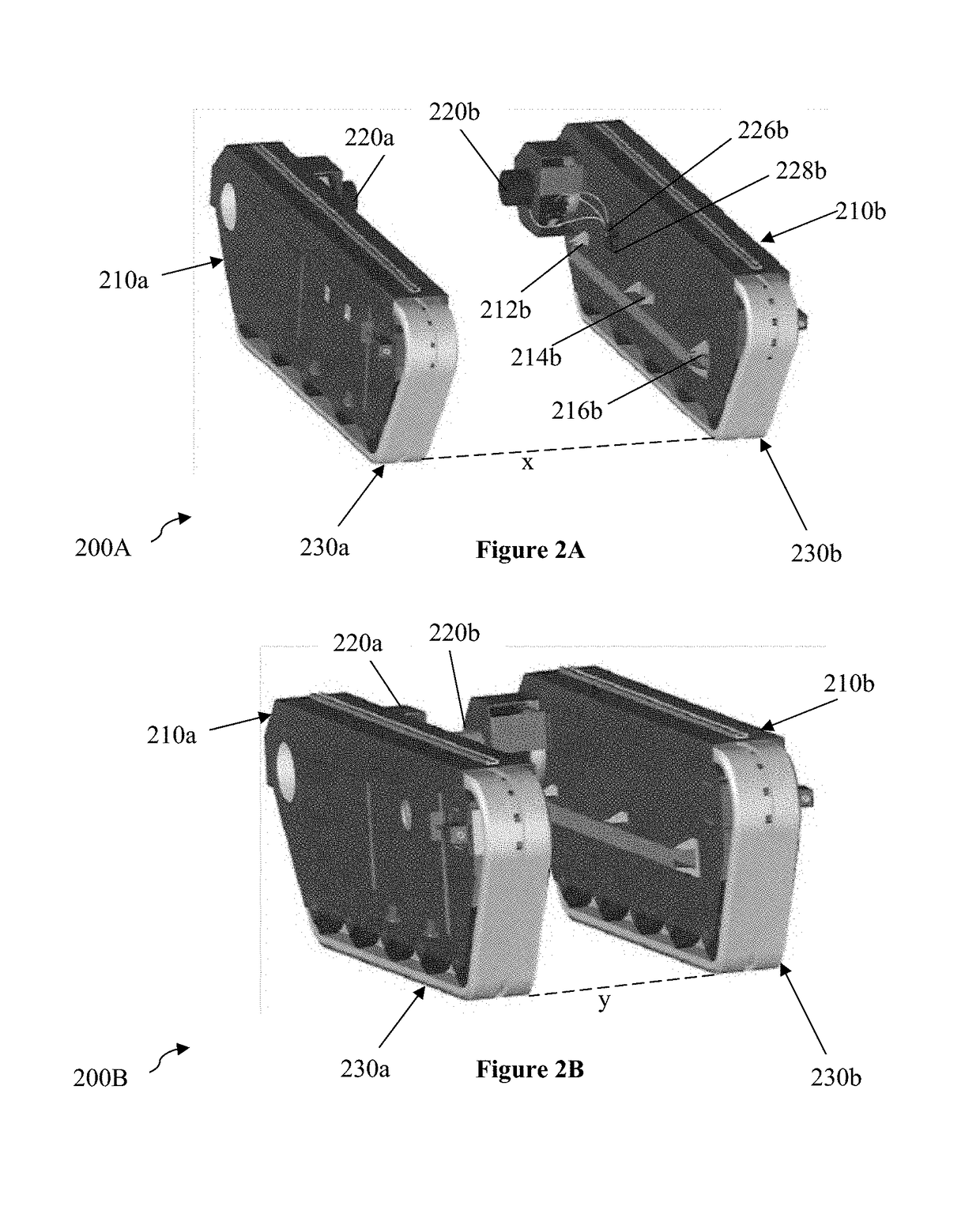Modular Robotic System
a robotic system and module technology, applied in the field of autonomous robotic systems, can solve the problems of high capital cost of robots, narrow application field, and inability to account for the complications encountered in the transport of loads, such as how and where to engage loads, and achieve the effect of improving load stability
- Summary
- Abstract
- Description
- Claims
- Application Information
AI Technical Summary
Benefits of technology
Problems solved by technology
Method used
Image
Examples
Embodiment Construction
[0027]The inventive subject matter provides methods, apparatus, devices, systems, kits, and compositions for generally fungible robots that autonomously cooperate to transport a load or a plurality of loads.
[0028]The inventive subject matter includes a fungible robot that autonomously cooperates with other robots to transport a load. One embodiment is the robot 100 illustrated in FIG. 1. Robot 100 is made up of motive component 110, body component 120, and motor housing130.
[0029]In this embodiment, motive component 110 comprises wheels 112a-e, track 114, and gear 116. It is contemplated that motive component 110 is capable of propelling robot 100 in at least two directions. It should be appreciated that the inventive subject matter is not limited to tracked robots, and can include other appropriate motive components, such as wheels, rollers, tracks, maglev, fluidic cushion, turbine, propeller, fluidic jet, mono-pedal, or multi-pedal mechanisms.
[0030]In this embodiment, motive compon...
PUM
 Login to View More
Login to View More Abstract
Description
Claims
Application Information
 Login to View More
Login to View More - Generate Ideas
- Intellectual Property
- Life Sciences
- Materials
- Tech Scout
- Unparalleled Data Quality
- Higher Quality Content
- 60% Fewer Hallucinations
Browse by: Latest US Patents, China's latest patents, Technical Efficacy Thesaurus, Application Domain, Technology Topic, Popular Technical Reports.
© 2025 PatSnap. All rights reserved.Legal|Privacy policy|Modern Slavery Act Transparency Statement|Sitemap|About US| Contact US: help@patsnap.com



